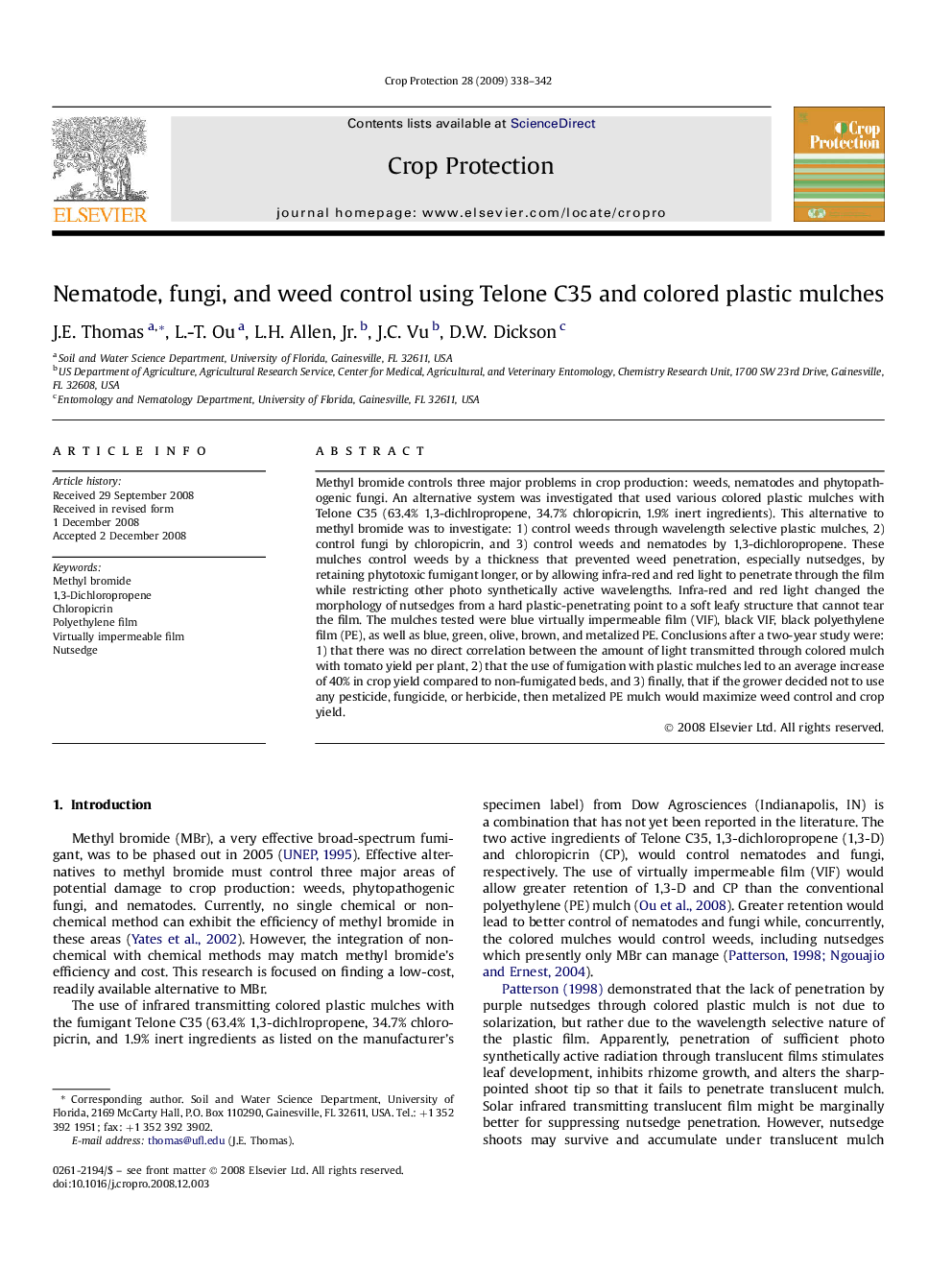| Article ID | Journal | Published Year | Pages | File Type |
|---|---|---|---|---|
| 4507491 | Crop Protection | 2009 | 5 Pages |
Methyl bromide controls three major problems in crop production: weeds, nematodes and phytopathogenic fungi. An alternative system was investigated that used various colored plastic mulches with Telone C35 (63.4% 1,3-dichlropropene, 34.7% chloropicrin, 1.9% inert ingredients). This alternative to methyl bromide was to investigate: 1) control weeds through wavelength selective plastic mulches, 2) control fungi by chloropicrin, and 3) control weeds and nematodes by 1,3-dichloropropene. These mulches control weeds by a thickness that prevented weed penetration, especially nutsedges, by retaining phytotoxic fumigant longer, or by allowing infra-red and red light to penetrate through the film while restricting other photo synthetically active wavelengths. Infra-red and red light changed the morphology of nutsedges from a hard plastic-penetrating point to a soft leafy structure that cannot tear the film. The mulches tested were blue virtually impermeable film (VIF), black VIF, black polyethylene film (PE), as well as blue, green, olive, brown, and metalized PE. Conclusions after a two-year study were: 1) that there was no direct correlation between the amount of light transmitted through colored mulch with tomato yield per plant, 2) that the use of fumigation with plastic mulches led to an average increase of 40% in crop yield compared to non-fumigated beds, and 3) finally, that if the grower decided not to use any pesticide, fungicide, or herbicide, then metalized PE mulch would maximize weed control and crop yield.
